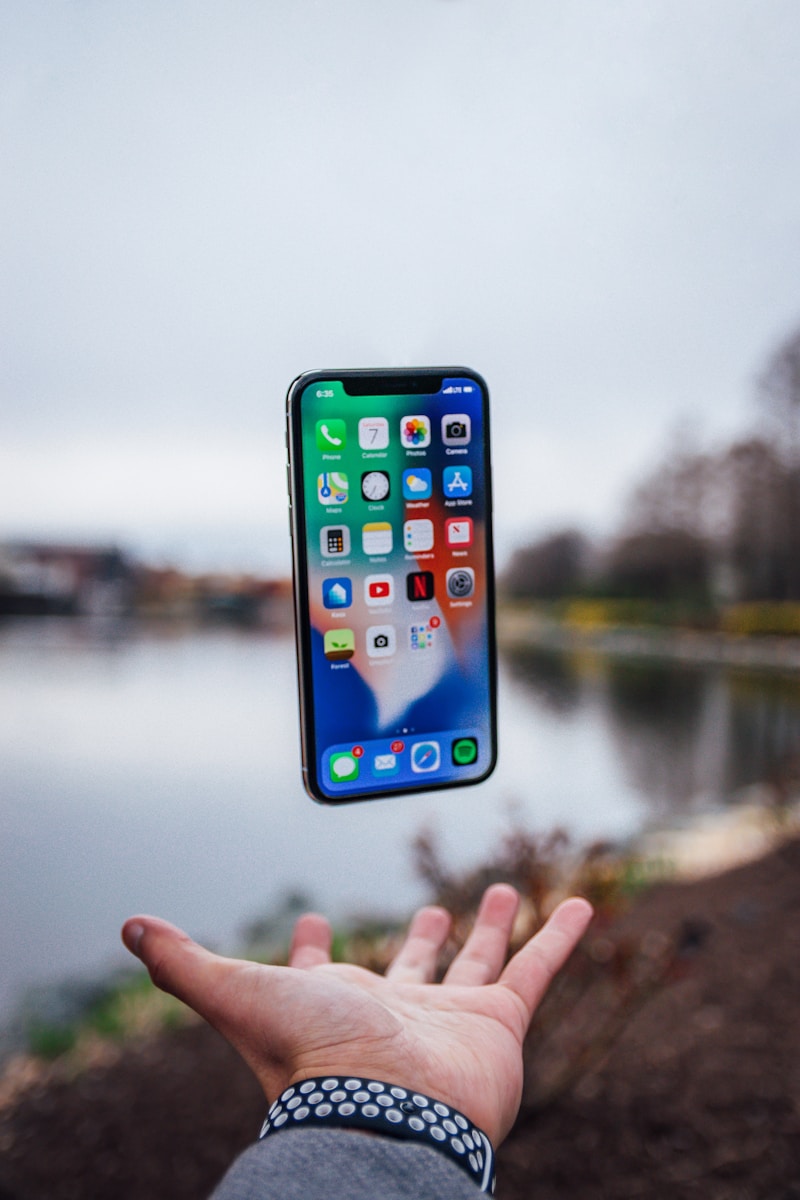Deciding when to replace your iPhone can be tricky. Many factors affect this choice. Your phone’s age, battery life, and performance all matter.
You should replace your iPhone when its battery health drops below 80% or it can’t run the latest iOS version. Battery health below 80% often means shorter usage time and slower performance. If your phone can’t update to the newest iOS, you’ll miss out on important security fixes and new features.
Signs you may need a new iPhone include frequent crashes, slow loading times, and running out of storage space. These issues can make daily use frustrating. Consider upgrading if your current model lacks features you want, like better cameras or 5G support.
| Factor | Replace When |
|---|---|
| Battery Health | Below 80% |
| iOS Updates | Can’t install latest version |
| Performance | Frequent crashes or slowdowns |
| Storage | Always full |
| Features | Missing desired capabilities |
Assessing Your iPhone’s Condition
To determine if your iPhone needs replacement, evaluate its battery health, physical condition, and overall performance. These factors will help you make an informed decision about upgrading your device.
Evaluating Battery Health
Battery health is a crucial indicator of your iPhone’s longevity. Check your battery health by going to Settings > Battery > Battery Health. Apple considers a battery capacity of 80% or above to be optimal.
If your battery health drops below 80%, you may notice:
- Shorter battery life
- Unexpected shutdowns
- Slower performance
A four-year-old iPhone may have lost about 18% of its total capacity. You can manage this by:
- Charging more often
- Using Low Power Mode
- Replacing the battery
Consider battery replacement when health drops below 80%. This can extend your iPhone’s life without a full upgrade.
Inspecting for Physical Damage
Physical damage can impact your iPhone’s functionality and resale value. Check for:
- Cracked screens
- Dents or bent frames
- Water damage indicators (red dots inside ports)
- Camera lens scratches
- Button responsiveness
Minor cosmetic issues may not require replacement. However, significant damage affecting usability or water resistance might justify an upgrade. Weigh repair costs against the price of a new device.
| Damage Type | Consider Repair | Consider Replacement |
|---|---|---|
| Minor scratches | Yes | No |
| Cracked screen | Yes | Maybe |
| Water damage | No | Yes |
| Bent frame | No | Yes |
Considering Performance and Storage Space
Your iPhone’s performance and available storage impact daily use. Signs you may need an upgrade include:
- Slow app launches
- Frequent crashes
- Inability to run latest iOS
- Insufficient storage space
If you regularly see “Storage Almost Full” warnings, it’s time to assess your needs. Older models with limited storage may struggle with modern apps and iOS updates.
Try these steps before replacing:
- Clear unnecessary data
- Use cloud storage
- Delete unused apps
If these don’t help, a newer iPhone with more storage might be necessary. Consider your usage patterns and choose a model that meets your needs for the next few years.
Understanding Apple’s Software Support Lifecycle
Apple’s software support for iPhones extends for several years. This benefits users through regular updates and security patches. Let’s explore how long you can expect support and when to anticipate its end.
iOS Updates and Compatibility
iOS updates are a key part of Apple’s support cycle. Apple typically offers 6-8 years of iOS updates for iPhones. This surpasses most Android phones in terms of long-term support.
New iOS versions usually come out yearly. They bring fresh features and security improvements. Your iPhone’s model determines its update eligibility.
Here’s a quick look at recent iOS compatibility:
| iOS Version | Oldest Compatible iPhone |
|---|---|
| iOS 14 | iPhone 6s |
| iOS 13 | iPhone 6s |
| iOS 12 | iPhone 5s |
Newer iPhones get more years of updates. Older models eventually stop receiving the latest iOS versions.
When to Expect End of Software Support
You can typically use your iPhone for 7-8 years before software support ends. This timeline starts from the device’s release date, not your purchase date.
Signs of ending support include:
- Your iPhone no longer gets the newest iOS version
- You stop receiving security updates
- Some apps become incompatible with your iOS version
Apple occasionally releases security updates for older iOS versions. These help protect devices that can’t run the latest iOS.
Keep in mind that hardware limitations often drive the end of support. Newer iOS versions may require more processing power or memory than older iPhones can handle.
Evaluating New Features and Technologies
New iPhone models introduce cutting-edge features that can significantly enhance your mobile experience. These advancements often justify upgrading your device.
Analyzing Camera Advancements
Camera improvements are a key reason to consider upgrading your iPhone. The iPhone 12 Pro introduced ProRAW, allowing for greater editing flexibility. The iPhone 15 took a giant leap with its 48MP main camera, offering much higher resolution photos.
Recent models feature improved low-light performance and advanced computational photography. This means clearer night shots and more natural portrait photos.
Video capabilities have also expanded. Cinematic mode on newer iPhones lets you adjust focus after recording, adding a professional touch to your videos.
| iPhone Model | Main Camera Resolution | Key Camera Features |
|---|---|---|
| iPhone X | 12MP | Portrait Mode |
| iPhone 12 | 12MP | Night Mode, Dolby Vision HDR |
| iPhone 15 | 48MP | ProRAW, Photonic Engine |
The Impact of 5G Connectivity
5G connectivity is a game-changer for iPhone users. It offers faster download speeds and lower latency, improving your online experience.
The iPhone 12 was Apple’s first 5G-capable smartphone. Each subsequent release has refined this technology, enhancing network performance and efficiency.
5G enables smoother video streaming, faster app downloads, and improved online gaming. It’s particularly useful if you rely on your iPhone for work or high-bandwidth activities.
However, 5G coverage varies by location. Check your area’s 5G availability before making it a primary upgrade reason.
OLED Display Benefits
OLED displays offer superior image quality compared to LCD screens. They provide deeper blacks, brighter colors, and improved contrast ratios.
The iPhone X introduced OLED technology to Apple’s smartphone line. Newer models have continued to refine this technology, offering better brightness and energy efficiency.
OLED screens also enable features like Always-On Display on the iPhone 14 Pro and later. This lets you see important information without waking your device.
If you consume a lot of media on your iPhone, an OLED display can significantly enhance your viewing experience. It’s especially noticeable when watching HDR content or using your phone in low-light conditions.
Additional Considerations for Replacing Your iPhone
When deciding to replace your iPhone, several factors beyond device performance come into play. These include upgrade programs, insurance options, and data management strategies.
Assessment of Upgrade Programs
iPhone upgrade programs offer a way to get the latest model regularly. Apple’s program lets you trade in your current device for a new one every year. Carriers like Verizon have similar plans.
Benefits:
- Always have the newest iPhone
- Spread costs over monthly payments
- Includes AppleCare+
Drawbacks:
- Ongoing financial commitment
- May pay more long-term than buying outright
Consider your budget and how often you want a new phone. If you like having the latest tech, upgrade programs could be cost-effective.
Analyzing Insurance and Warranty Options
AppleCare+ extends your warranty and covers accidental damage. It’s worth evaluating against your phone usage habits.
| Coverage | AppleCare+ | Carrier Insurance |
|---|---|---|
| Duration | 2 years | Ongoing |
| Repairs | Discounted | Often free |
| Lost/Stolen | Not covered | Usually covered |
| Cost | One-time or monthly | Monthly |
AppleCare+ suits careful users who want Apple-certified repairs. Carrier insurance might be better if you’re prone to losing your phone.
Backup and Data Transfers
Before replacing your iPhone, ensure all your data is safely backed up. iCloud offers automatic wireless backups, while iTunes provides a local option.
Steps for a smooth transition:
- Perform a full backup
- Sign out of iCloud and iTunes
- Erase all content and settings
- Set up your new iPhone
- Restore from backup
Transferring data between devices is usually straightforward. Apple’s Quick Start feature can transfer most data wirelessly from your old iPhone to the new one.
Remember to securely erase your old device before selling or recycling it. This protects your personal information and prepares the phone for its next user.
Frequently Asked Questions
iPhone replacement decisions depend on several factors including device age, performance, and battery health. User needs and new features also play a role in upgrade timing.
How many years should an iPhone last before considering a replacement?
iPhones typically last 4-5 years before replacement becomes necessary. This timeframe allows for several iOS updates and reasonable performance.
Your usage patterns affect longevity. Heavy users may need to upgrade sooner while light users can keep their devices longer.
What are the signs indicating it is time to replace my iPhone?
Slow performance is a key indicator. If apps take too long to open or tasks lag, it may be time for an upgrade.
Battery issues are another sign. When your iPhone needs frequent charging or shuts down unexpectedly, consider replacement.
Inability to install the latest iOS version suggests your device is outdated.
How often does the average person replace their iPhone, and what factors influence this?
Most users replace their iPhones every 2-3 years. This aligns with carrier contract cycles and Apple’s release schedule.
Factors influencing replacement frequency include:
- New features in latest models
- Current device performance
- Battery health
- Personal budget
- Technological needs
What battery health percentage is advisable to replace an iPhone battery?
Consider battery replacement when health drops below 80%. At this point, you’ll notice reduced performance and shorter battery life.
Apple offers battery replacement services. This can extend your iPhone’s life if other components still function well.
Aside from the iPhone model updates, what are compelling reasons to upgrade to a new iPhone?
Improved camera capabilities often drive upgrades. New models offer better low-light performance and advanced features.
5G support is another reason. Newer iPhones provide faster cellular speeds where available.
Enhanced security features in recent models protect your data better.
Is there a general guideline for the lifespan of an iPhone before it should be replaced?
A general guideline suggests replacing your iPhone every 4-5 years. This ensures you have a device that can run the latest iOS version and apps.
Consider upgrading sooner if you need specific features or your current device underperforms.
| Factor | Replacement Timeframe |
|---|---|
| Performance | 3-4 years |
| Battery Life | 2-3 years |
| iOS Updates | 5-6 years |
| New Features | 1-2 years |
Your specific needs may vary. Assess your iPhone’s performance and your requirements regularly.






